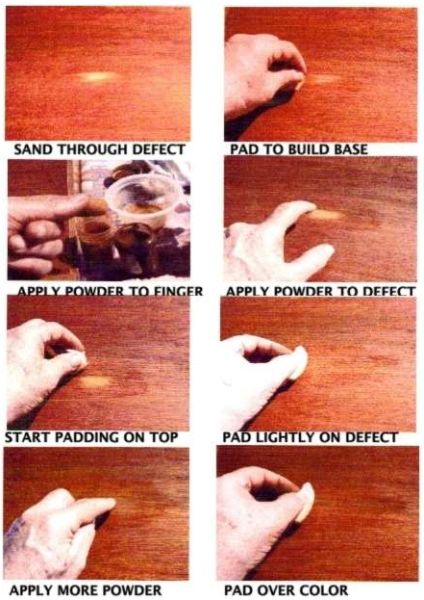Question
What is the best brand of touchup pigment? And how do you keep from having lumpy pigment touchups? I have been using Blendal powders along with Mohawk graining liquid.
Forum Responses
(Finishing Forum)
From contributor R:
Get a spraybomb in the material you have used, be it satin or semi. Also get a little retarder. I mix my colors in the screw top of a L/T can. I use dry powders mixed into the satin and add a bit of retarder to my mixture. If my color happens to dry in the screw cap, I dip my touchup brush into some retarder and mix it back up and continue my touchups.
I prefer to mix my touchup colors on a piece of plate glass as a palette. I first spray some lacquer on the glass (I prefer flat) and then add a shot of retarder. This will keep the lacquer wet longer. I then dip a brush into the lacquer mix and then into my pigment. The brush will pick up the pigment (as much or as little as you want). Rub brush with pigment back into the lacquer mix. If mix becomes stiff, add a little more retarder. Continue mixing this way until you get the desired color. Glass gives me the ability to see the depth of color. I am seldom looking for an opaque color, and glass helps me find the right translucency of color for each repair. It is hard to see these subtleties when mixing in a screw cap. I know that a lot of repair people like to use the "finger and pad" method. I've seen some people do it well, but I've seen more people do it poorly. I prefer brush filling my repairs, or even airbrushing. I feel it gives a better end result. Besides, I have big sausage fingers which don't work well for this type of delicate procedure.
P.S. Get some retarder! You'll be fine no matter which pigments you use.
